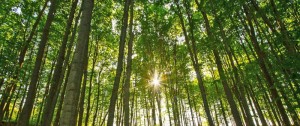
Arbor Day falls on the last Friday of April, which this year also happens to be the last day of the month, and so will be a fitting end to what Mayor Rothschild has decreed to be Earth Month in Tucson.
On Monday, May 2, the Mayor will read an Arbor Day proclamation at Grijalva Elementary School and help the students plant 16 drought-resistant trees on the campus, which will count toward the Mayor’s 10,000 Tree Challenge, more about which can be found at www.mayorrothschild.com/trees. The project is sponsored by Wells Fargo’s NeighborhoodLIFT program and realized with the help of Trees for Tucson, the urban forestry program of Tucson Clean & Beautiful, and TUSD’s ground crew, which put in the irrigation system.
The cooling effect of tree shade lowers utility bills and so, indirectly, helps to decrease carbon emissions. Trees also absorb carbon directly and planting new forests is, therefore, widely considered a key approach to achieving the reduction in emissions mandated by the Paris Conference on Climate change last december, which was ratified by the participatories this month.
However, a recent study by the French Laboratory of Climate and Environmental Sciences, published in volume 351 of Science Magazine, shows that the forests planted in Europe in the past 250 years have actually accounted for a slight increase in global warming.
One reason is that these so-called ‘managed forests’ do not have the thick carbon-absorbing ground cover found in primal forests, of which there are very few left.
Europe has in fact only one old growth forest remaining near Poland’s eastern border and this forest is now also under threat, as Poland’s Minister of the Environment has quadrupled the allowed amount of logging arguing that it is necessary to combat a bug infestation. Opponents reject that argument, claiming that the bugs kill off the weaker trees and so makes the forest as a whole stronger.
Another reason the newly planted forests do not prove effective against global warming is that they consist mainly of conifers, which are cheaper than broad-leaf trees and by and large grow faster as well. But their needles obviously do not provide the shade that broad leaves do and as ground cover their capacity to absorb carbon is also much less. Moreover, conifers are generally darker in aspect than desiduous trees and therefore reflect less sunlight.
The report concludes that the approach to forest management is indeed in need of a tweak.
All this is certainly not a reason to stop planting trees, especially in our neck of the woods – or lack thereof.
Apart from the shade they provide and their relative carbon-absorption capacity, trees are just plain beautiful. Among the oldest beings on earth, their variety and their contribution to human civilization is amazing. As a matter of fact, without trees, there would be no civilization at all, which you will find marvelously expounded in British dendrologist Colin Tudge‘s book ‘The Tree’, a comprehensive survey of everything tree and an excellent read to boot.
(Broadcast 3:30)

